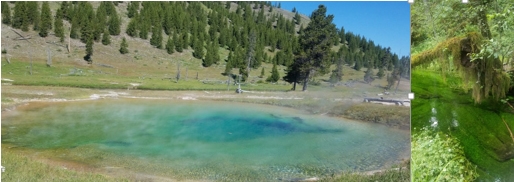Phototropic microbial communities are groups of microorganisms that live together and require light to grow. The organisms survive by exchanging oxygen and carbon dioxide with each other. Researchers studied the factors that decide how these organisms interact. The researchers used a combination of computational modeling and experiments. They found surprising results. Two different kinds of microorganisms can coexist in either in a cooperative or competitive fashion. How those microorganisms interact depends on the availability of nutrients, the environment, and the microorganisms’ genetic background.
The Impact
Advanced computational tools can help scientists determine how microorganisms grow and communicate. These techniques could help scientists better understand and possibly even modify microbial communities. This ability would have important applications. For example, agriculture relies on microbial communities in soils. And modifying microbial communities could help to preserve and restore natural environments.
Summary
Microbial communities pervade almost every environment in the world. DNA sequencing techniques can accurately identify members of microbial communities, and scientists now have massive amounts of information on the makeup of these communities. But we do not have answers to important questions. Why are some microbes common while others are rare? How do biological systems become genetically stable? How do communities manage gene loss to attain streamlined genomes? The boom in raw data has not been accompanied by a similar boom in theoretical tools to answer such questions.
In this research, scientists studied phototrophic communities, which consist of algae or cyanobacteria that manufacture their food through photosynthesis and bacteria or fungi that are heterotrophic, meaning they cannot manufacture their own food. In these communities, members interact by exchanging oxygen and carbon dioxide. Using a model-driven approach, the researchers predicted the environmental and genetic conditions in which two microorganisms coexist in either a cooperative or competitive fashion. For example, metabolic modeling results revealed a dependency of a type of yeast (a heterotroph) on nitrate produced by a photosynthesizing algae. This dependency favored a cooperative symbiotic interaction that was reinforced though additional exchange of materials needed for metabolism, such as amino acids and organic acids. The researchers obtained experimental results that validated their modeling predictions. In another example, adding nitrate during cultivation created a competitive interaction where the yeast quickly consumed all glucose and outcompeted the algae.
The research also offered insight on two long-standing questions in evolutionary biology: (1) how do biological systems become genetically stable without members outcompeting each other, and (2) how do communities manage deleterious gene loss to attain streamlined genomes? This research provided some answers by identifying genes that improve, maintain, or harm the microbial phenotypes in different competition or cooperation conditions.
Funding
This material is based upon work supported by the National Science Foundation and the U.S. Department of Energy Office of Science, Office of Biological & Environmental Research. Cristal Zuniga was in part supported by Mexican National Research Council (CONACYT).
Original post https://alertarticles.info


